If like me you’ve been lusting after pillar leg furniture but can’t find a piece that just right — or it’s well out of budget — keep scrolling to see how I hacked my own outdoor dining table with tiled pillar legs. This is a DIY I’ve wanted to create for well over a year and I finally pieced together in my mind how to pull it off. I’m by no means an advanced DIYer… In fact, up until this DIY I’d never used a jigsaw, tiled… or made any furniture for that matter!
Here’s how I made my very own DIY outdoor dining table with tiled legs. I’d love to know what you think of it 😉
Related article: From drab to fab: The easy budget alfresco makeover DIY that will transform your outdoor living space
Related article: 5 easy ways to achieve a Hamptons outdoor space
Items you’ll need:
- 4 x Kmart oak look side tables (sold as a set of 2 — I’ll be using the smaller table size for another DIY table)
- MDF board 2400mm long x 1200mm wide
- White kitkat mosaics
- 2 x 1000mm PVC pipe and end caps (used to give the side tables extra sturdiness)
- Cushioned rubber floor protectors (to lift the table off the ground)
- T-Rex glue
- Waterproof (I used Gripset Fast Cure)
- White grout (and measuring jug, bucket and stirrer to mix)
- Feather finish
- White oxide
- Sealer (I used Stain-Stop by Lithofin)
- Jigsaw
- Drill and hole drill bit (large enough for the PVC pipe)
- Sander
- Trowel
- Tile float
- Paint brush
- Measuring tape
- Pencil

Steps:
1. Come up with a design for your table. I designed a pill-shaped outdoor dining table with two large tiled pillar legs inspired by a similar ripple curved outdoor dining table I’d seen. You can get as creative as you like, designing a shape to suit your space.

2. I started by making the pillar legs. To do this, I found the centre point in each of the 4 side tables and cut out a hole large enough to feed through my PVC pipe. This is because these side tables are not designed to hold a large weight and I wanted to give the table more sturdiness by reinforcing the centre with pipe.
Then I glued 2 side tables on top of each other, fed through the pipe that I cut to size and glued it all in place. I repeated these steps for the second pillar leg.
I also added rubber furniture protectors to the base of the 2 pillar legs to lift the table off the ground.
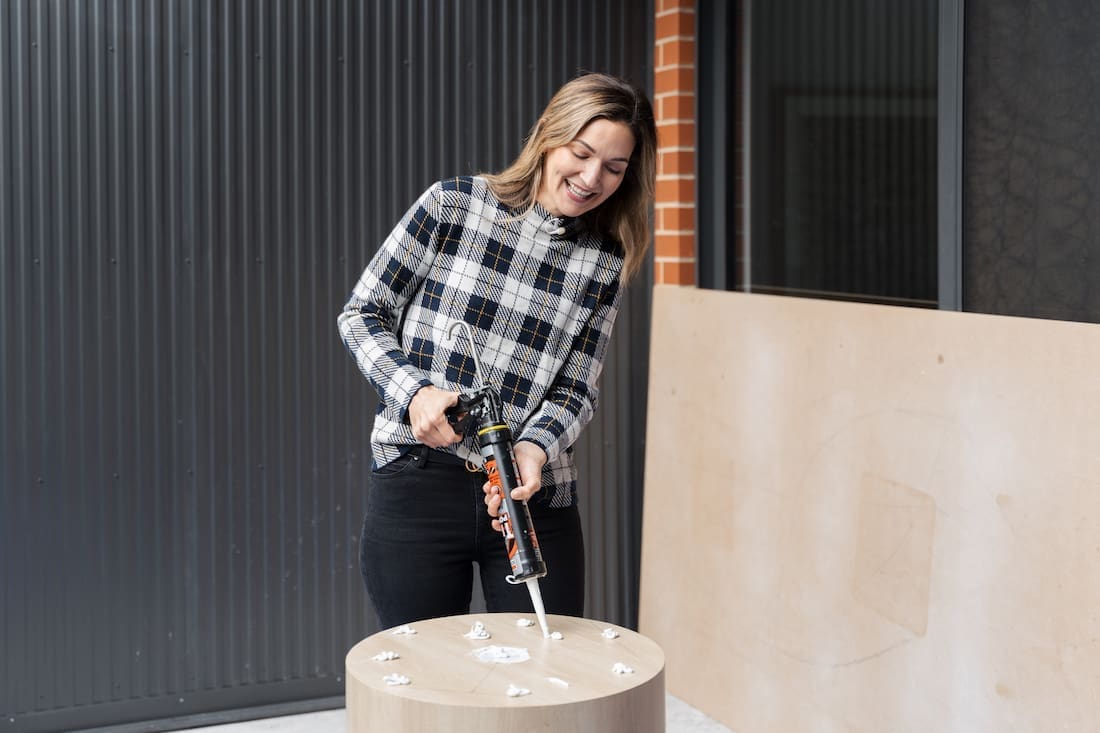
3. Then I glued my MDF board on top. Take your time to get the position right. You want your pillar legs to be in the centre and equal distance apart.
Next I drew out the curved edges. To do this, I found the centre point in the board and used a level as a guide (much like a giant ruler) to draw the curves.
Use a jigsaw to cut out your pill shape tabletop.

4. Then I sanded the edges to smooth out my cuts. This was my first time using a jigsaw so my lines were a bit bumpy.
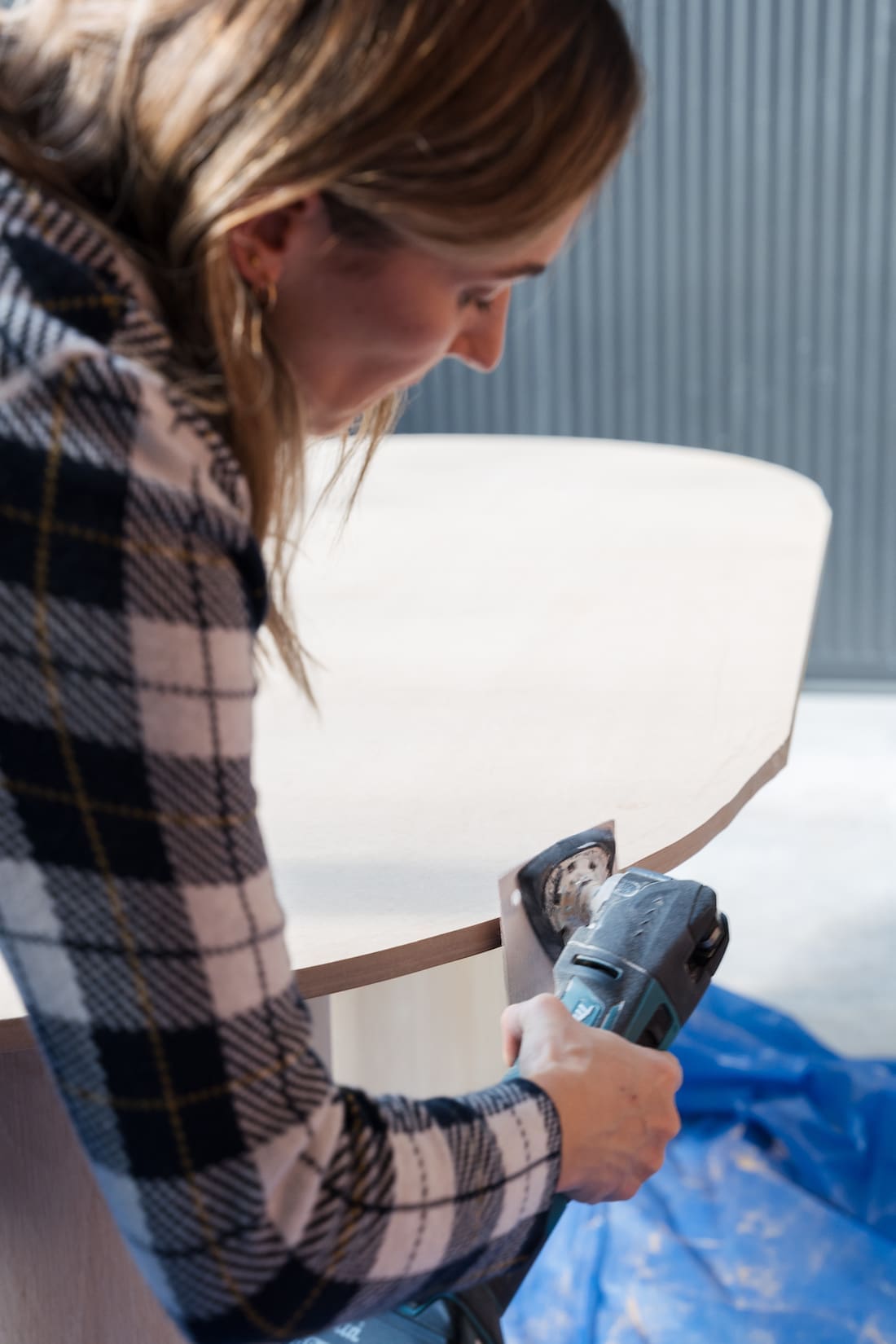
5. I cleaned the table and then used a paint brush to apply waterproof all over (tabletop and legs). You won’t need to do this if your table is indoors. But this one is semi-exposed in an alfresco area.
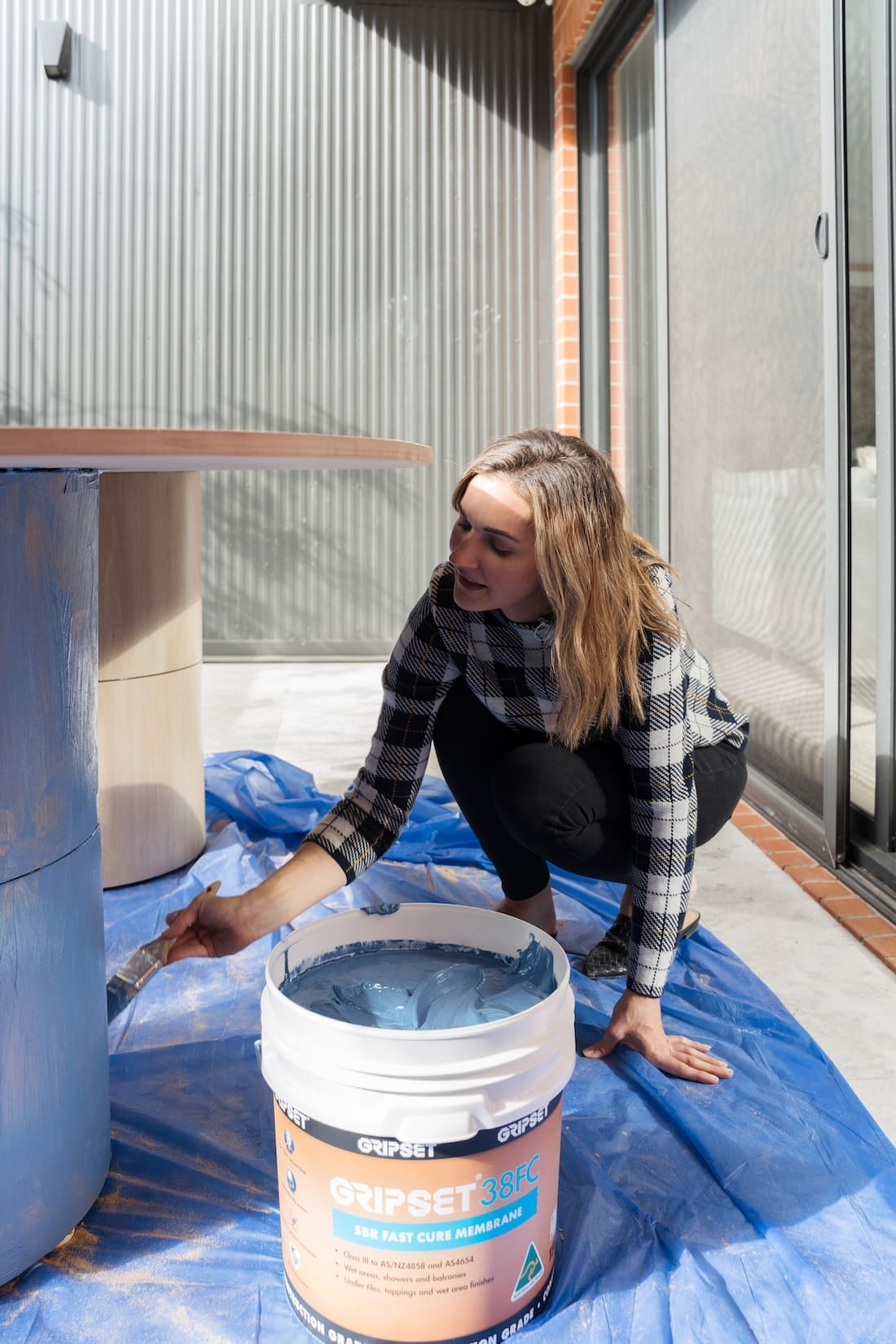
6. Then I tiled the pillar legs. To do this, I applied T-Rex glue using a trowel and placed the kitkat mosaic tiles on top. I used 1mm tile spacers to get an equal distance between the mosaic sheets.
You can find kitkat tiles (also called finger tiles) in many sizes, colours and finishes, including natural stone, so you could get really creative!
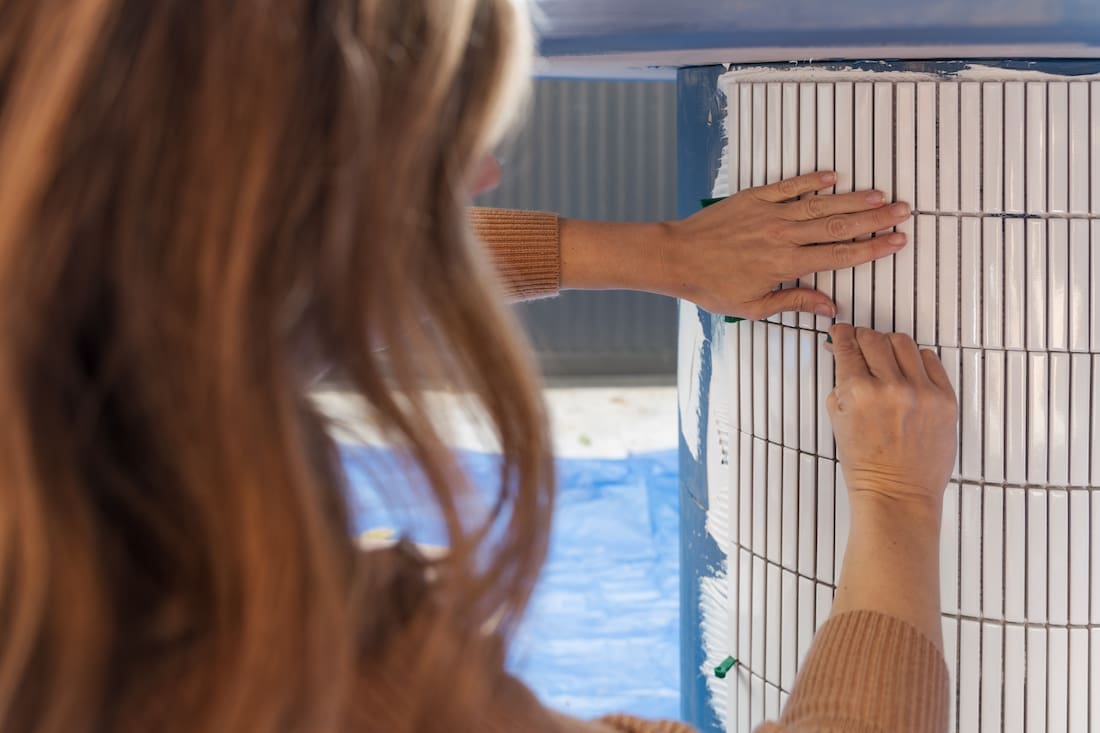
7. The next day, once the glue was dry, I grouted the pillar legs. You could use a different coloured grout to emphasise the tile shape but my tiling job isn’t perfect so I chose white grout. Mix up the grout following the instructions on the packet and use a tile float to get it in between all the tiles. Sponge off excess grout using a damp sponge.

8. Then I worked on the table top. I wanted to give this table a stone look top so I used Feather Finish (concrete render) and mixed in white oxide. I used a ratio of about 85% feather finish and 15% white oxide.
Once I mixed it well with water, I used a trowel to apply it evenly over the table top. You want to achieve a ‘cake batter consistency’ so it’s easy to apply but not runny. As you can see in the pics, I also used my hands to apply it onto the sides of the table.
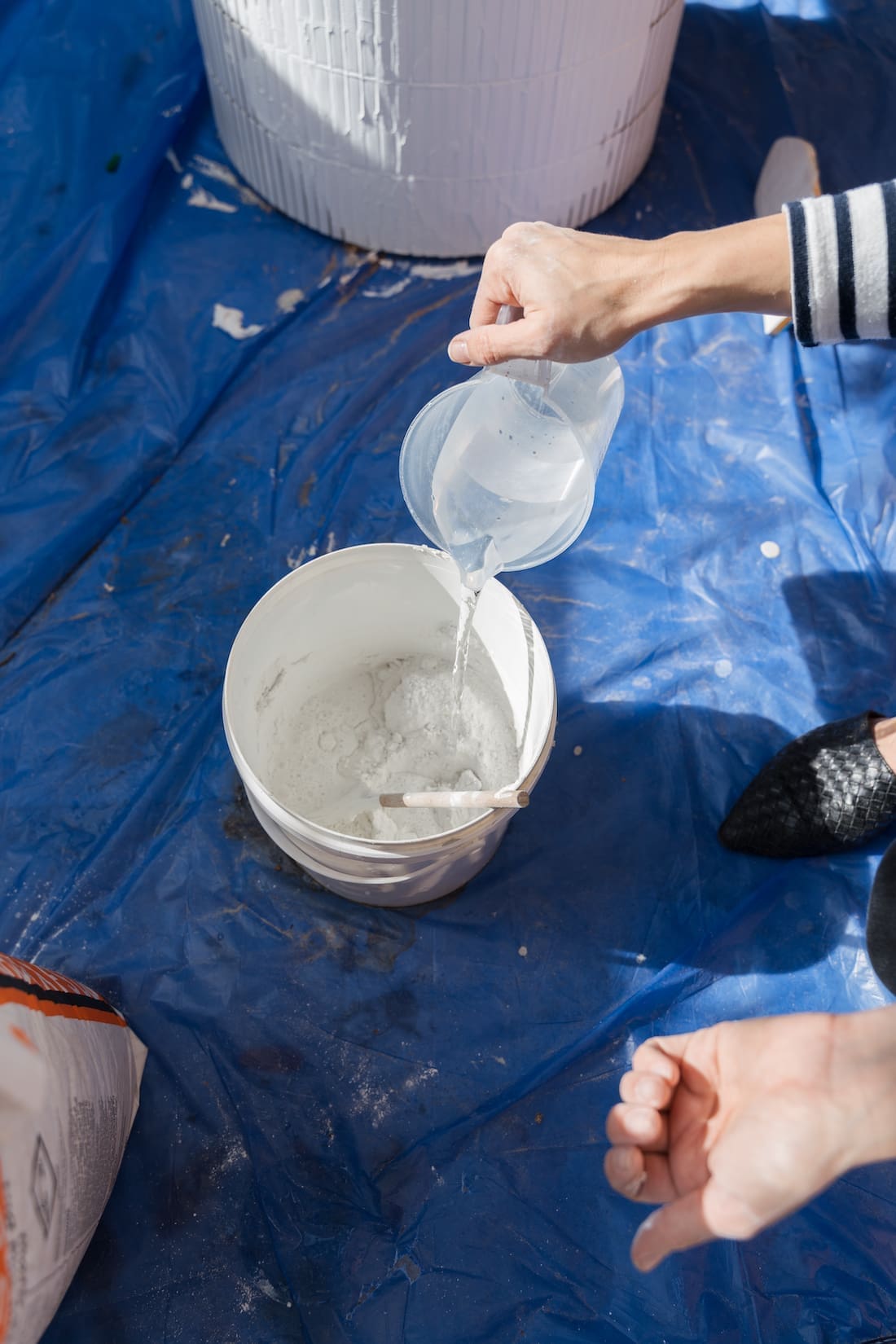
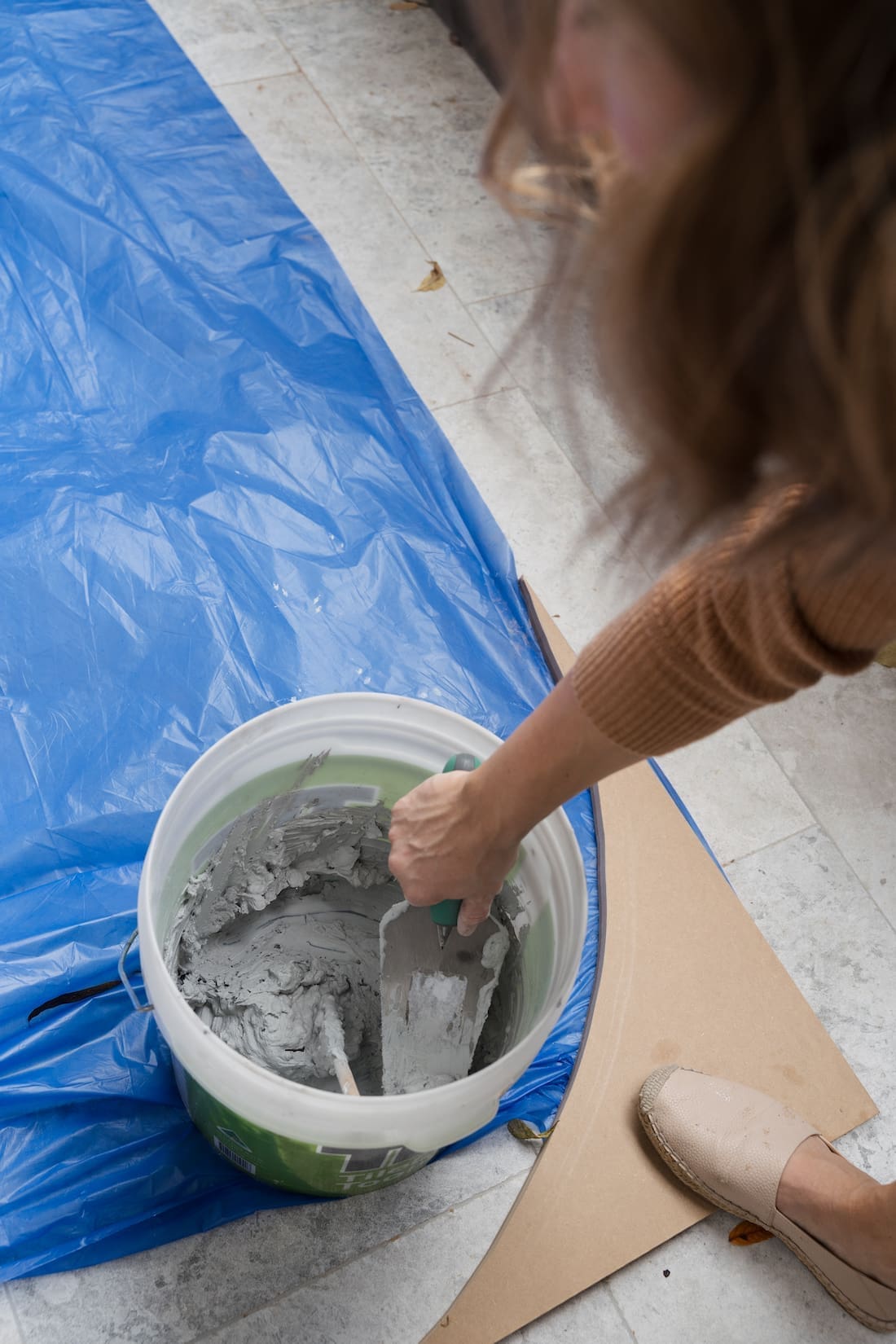
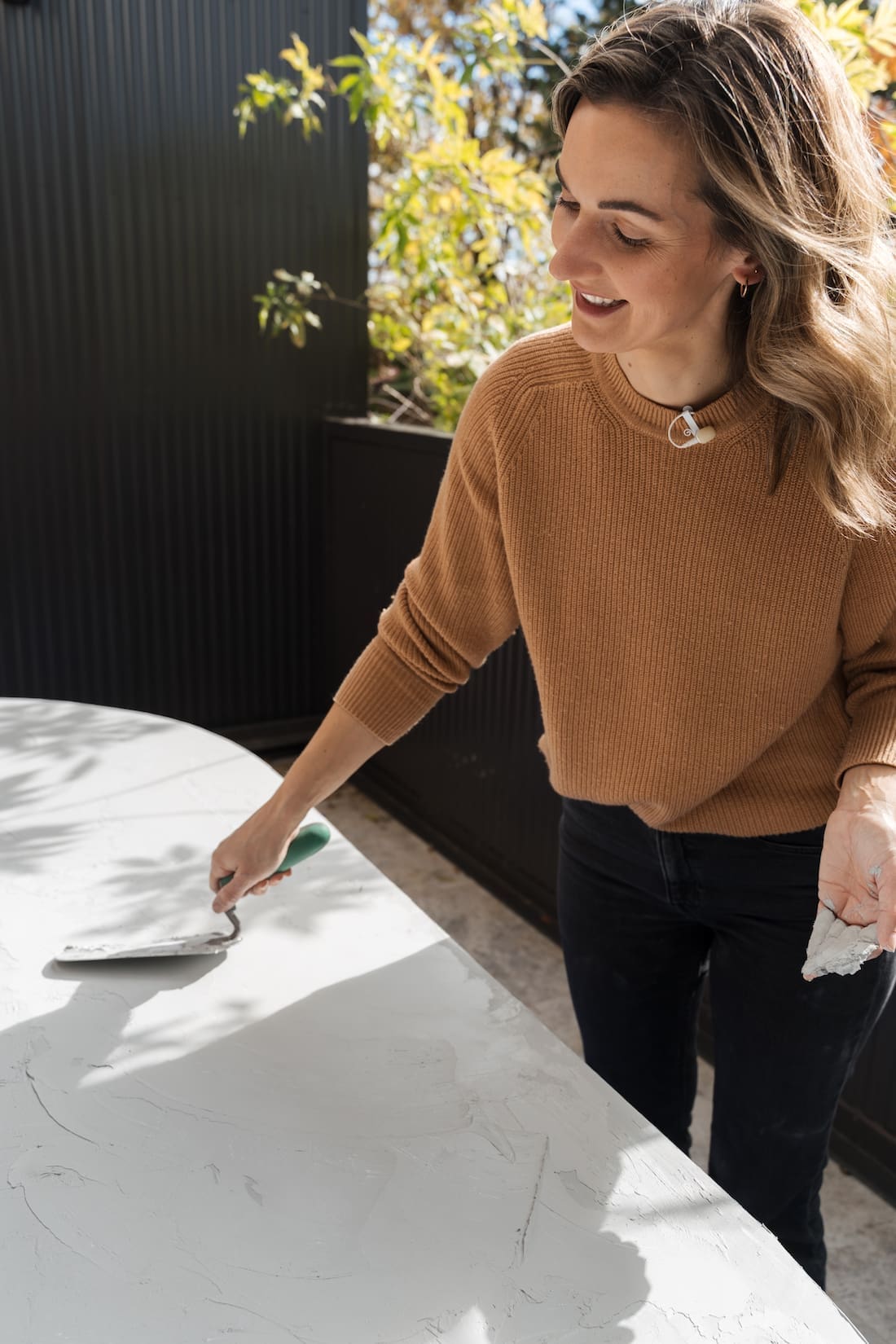
9. Allow the table top to dry fully before using a sander to smooth it out. Depending on the coverage you achieved with the feather finish mix, you may need to repeat step 8 and apply a second coat.
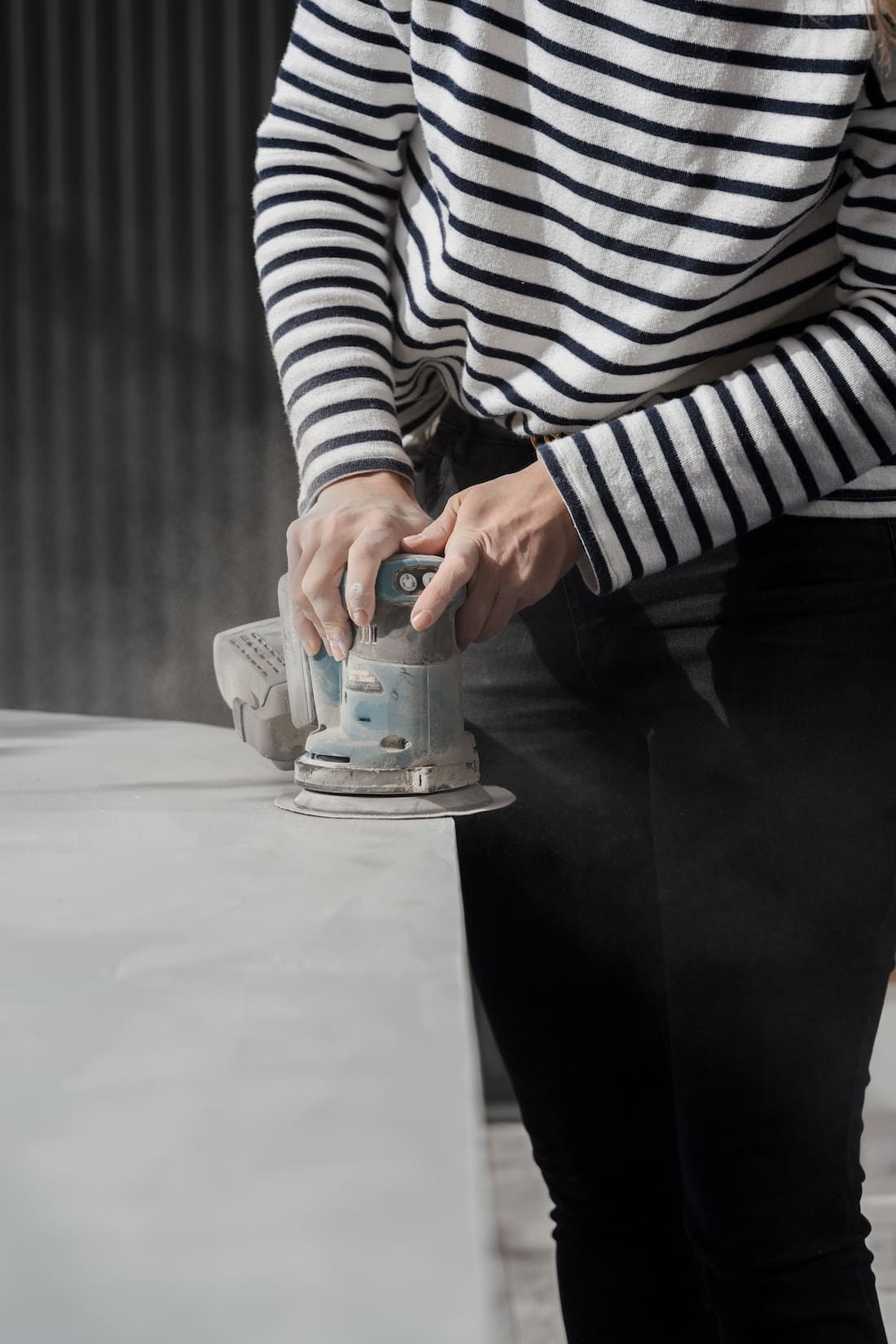
10. Finally, I cleaned the table and applied one coat of sealer with an old rag. I did this by pouring the sealer directly onto the table and using the rag to rub it in using quick circular motions.

I won’t lie, this is one of the most complex DIYs I’ve made. But as someone with zero woodwork or tiling skills, I was able to make this table by myself and am thrilled with the results. My biggest tip would be to have patience, as you need to allow for a lot of drying time!
Do you have any questions about this DIY? Pop it in the comments below and I’ll get back to you asap. Or have you been inspired to make your own DIY outdoor dining table? I’d love to know what you decide to create!
More DIYs for the home
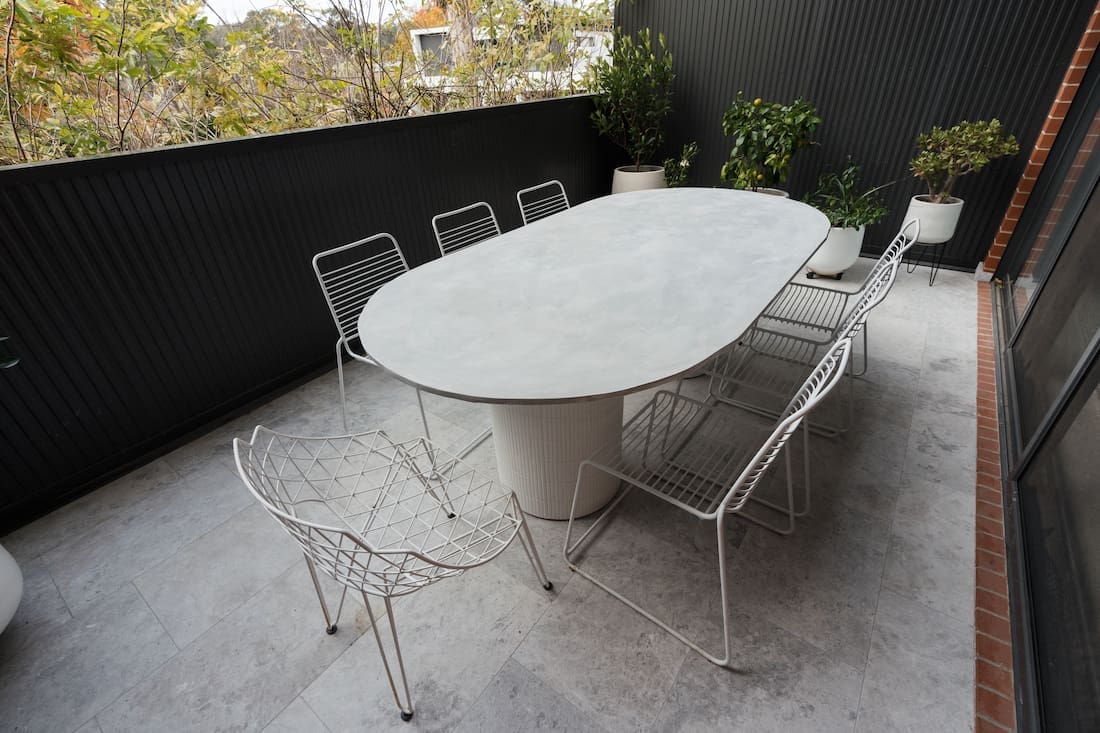
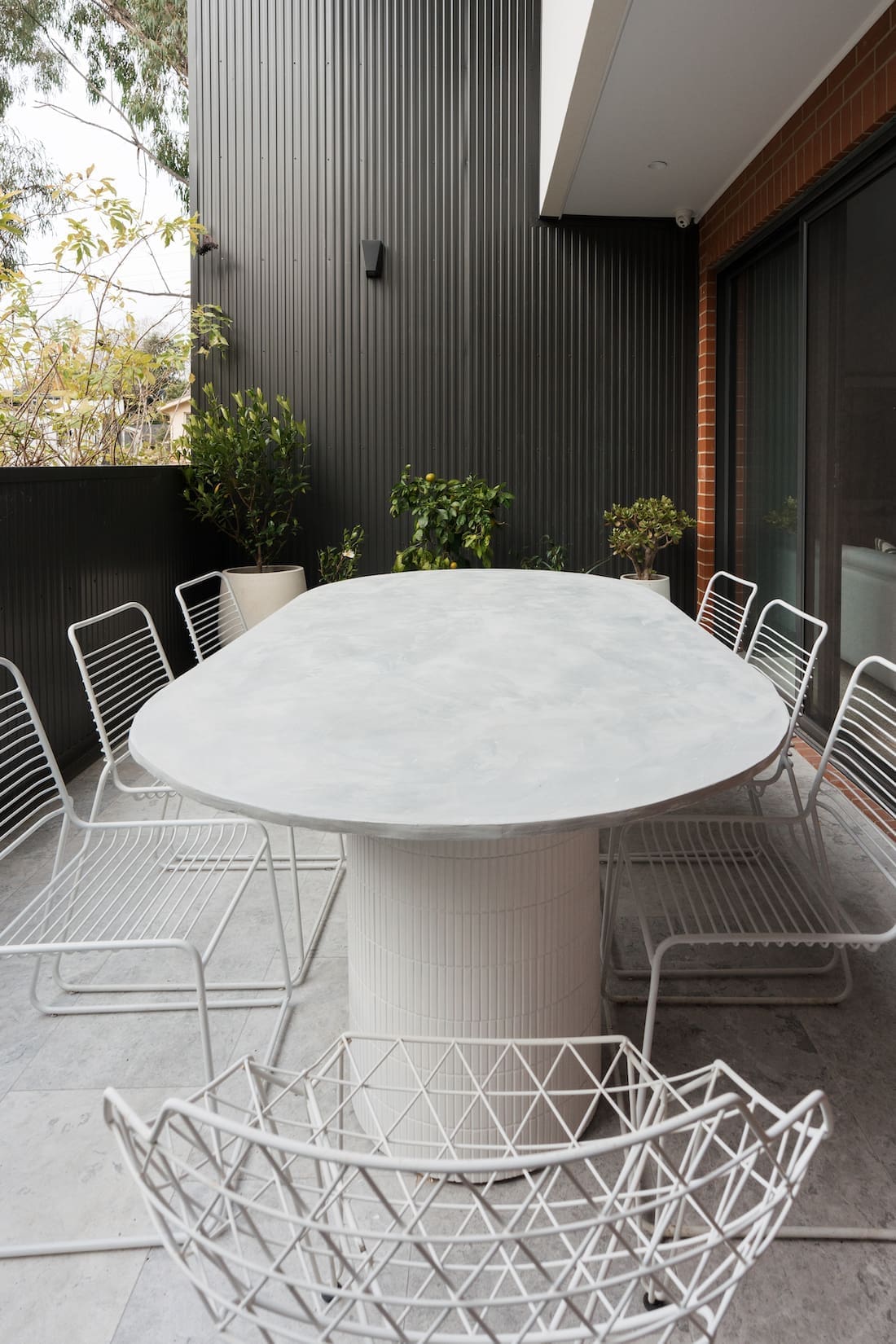
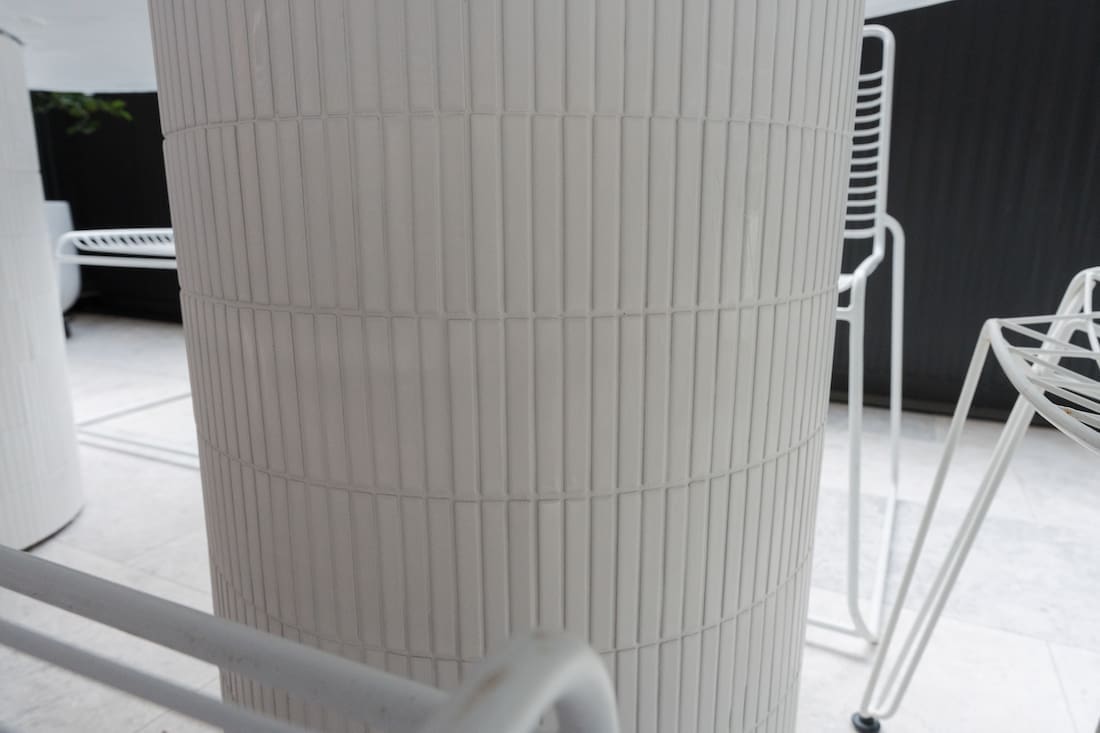
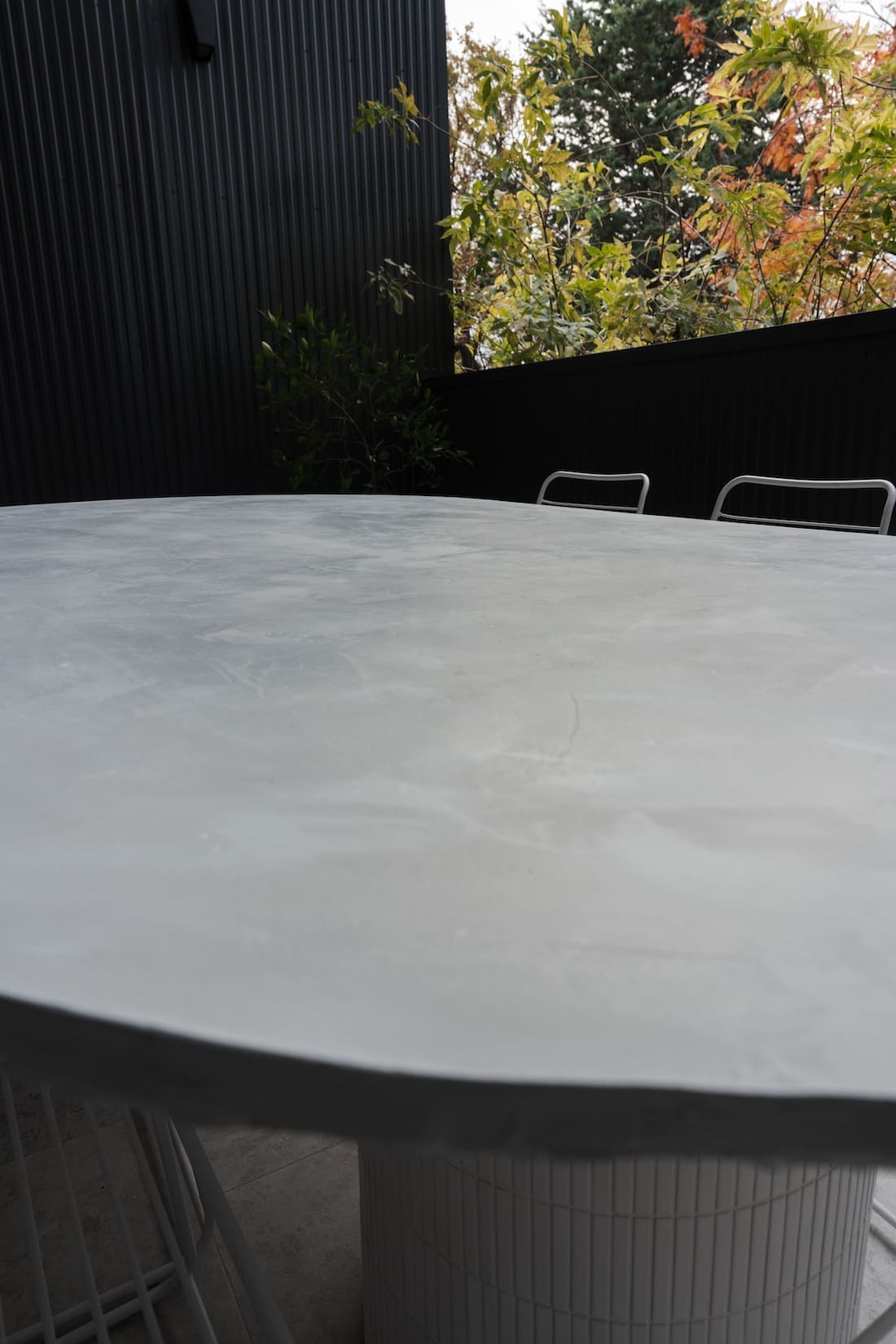
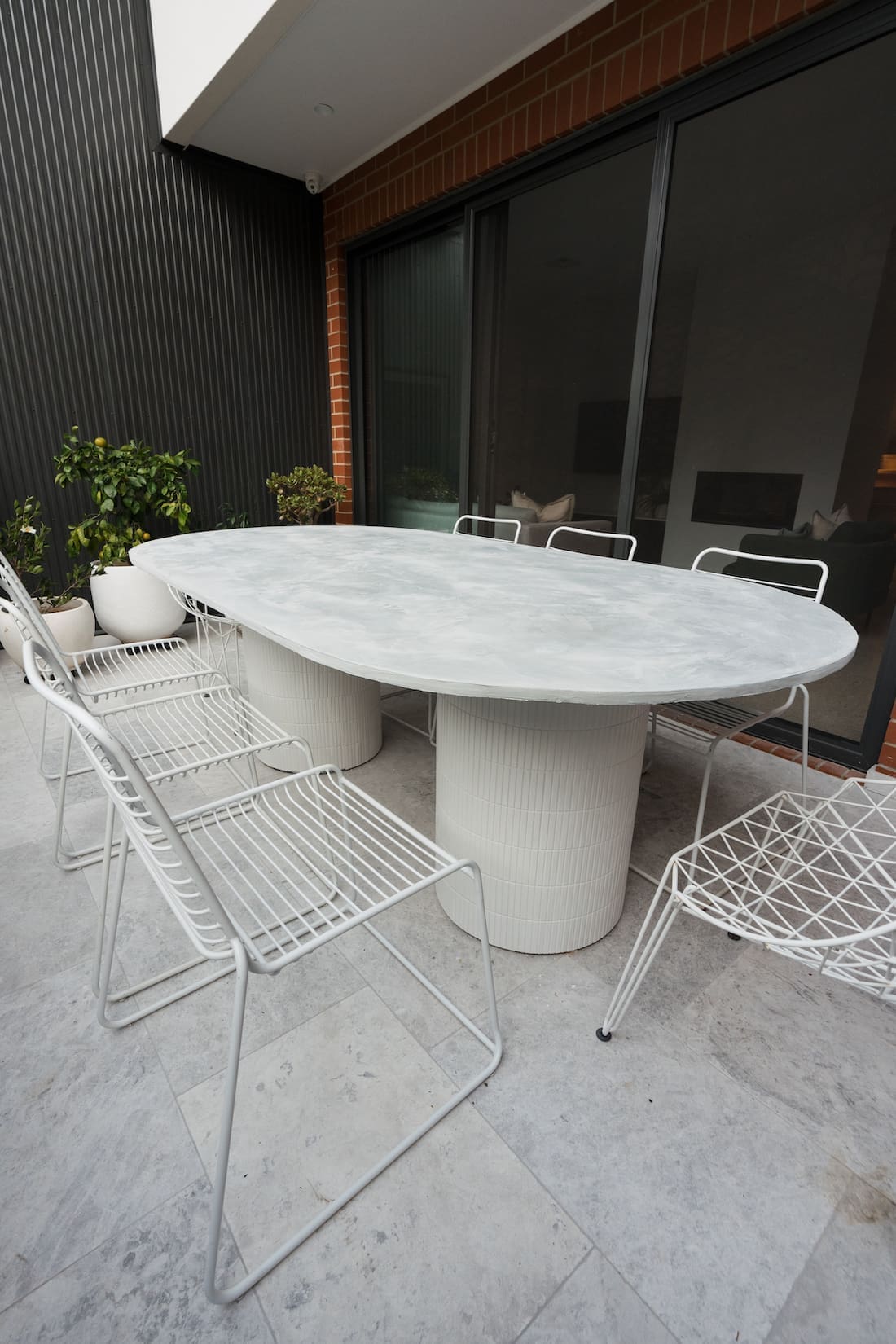
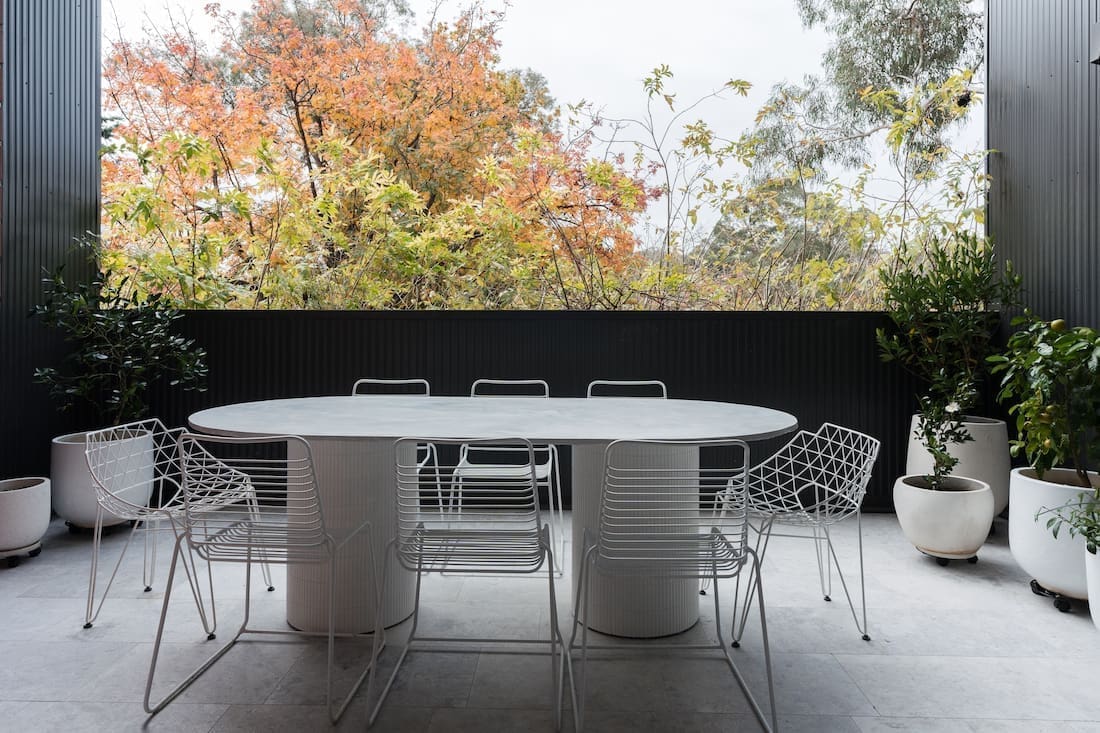
This article was first published in May 2022



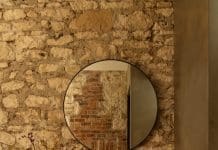
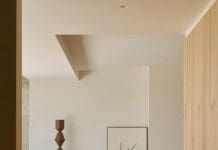
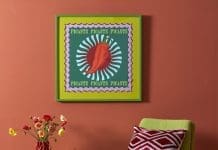

Just wondering what the end cost of this diy project was?
Hi Leighanne
The 4 x side tables cost just under $200. However, I was left with 4 small side tables (as they are sold as a set of 2: one large, one small) that I used for another table.
The MDF board tabletop was $85 (a little more expensive now).
The Feather Finish was $120 per bag.
The tiles were gifted but are available for about $11 per sheet (I think I used 34 sheets). To eliminate this cost, you could simply apply feather finish to the legs as well (plenty left over in the bag) and leave natural or paint white.
I had the other products at hand but if there’s anything else you don’t have and need, you can find all the other items at Bunnings with prices available online.
Hope this helps!
How has this table top held up? I’d love to get an update on how it has held up a year later.
Hi Madeline, thanks for asking! The table is still going great. The top has a few micro cracks from heat expansion and contraction as it is in direct sunlight throughout the day but still looks fab. It’s my proudest DIY to date 🙂
Gina this is absolutely amazing! I love it! You should be so proud, especially on your first try! You’ve inspired me to have a go. I too have been lusting after this pillar leg and curved oval table design but struggling to find correct dimensions for my space. Yours is also the simplest instruction I have found. I always look forward to reading your blogs and tips (however somehow I missed this important post earlier). You really are inspirational and your tips are so functional and appreciated. Thanks for taking the time to help and inspire others. 🙂 🙂 :). off to Kmart I go!
Oh my goodness, thank you so much Natalie for your super lovely comment! I’m so glad you enjoyed this DIY and I’d love to see your version of the table xx